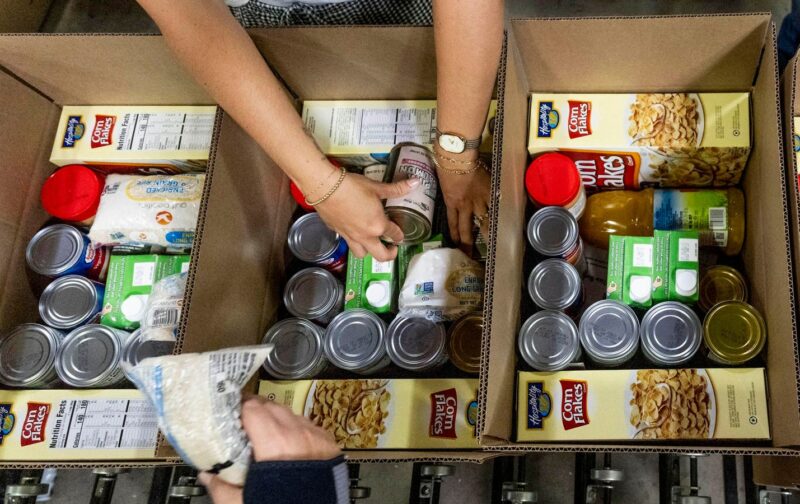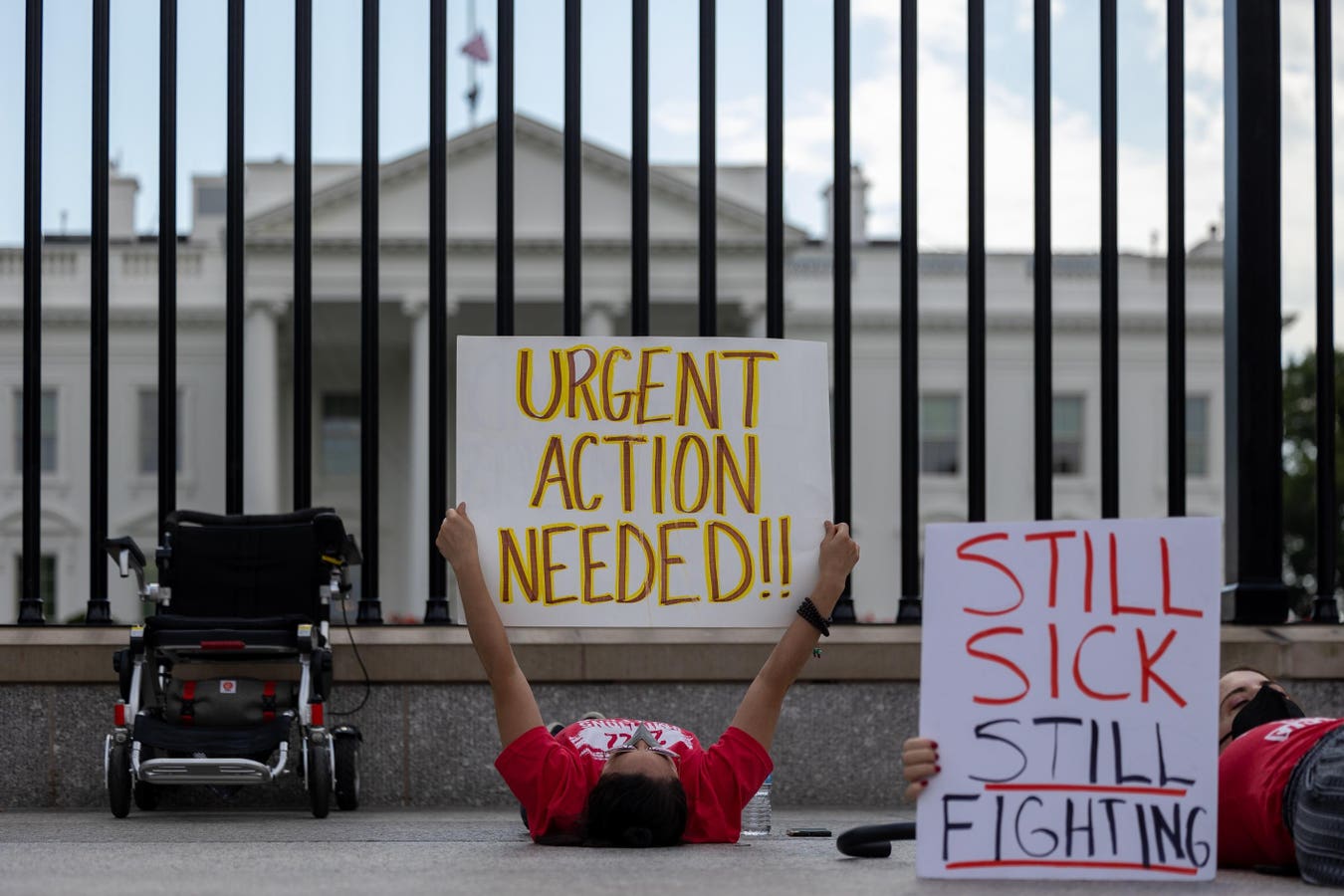GARDEN GROVE, CA – May 09: Workers pack boxes for the Commodity Supplemental Food Program at The Orange County Food Bank in Garden Grove, CA on Friday, May 9, 2025. The program serves about 25,000 local lower-income seniors. The program could lose federal money if the Trump administration’s preferred 2026 federal budget becomes law. (Photo by Paul Bersebach/MediaNews Group/Orange County Register via Getty Images)
MediaNews Group via Getty Images
By the time families sit down for Thanksgiving dinner next year, millions of Americans may have permanently lost access to food assistance programs. That reality sits uneasily beside another trend shaping national policy: a growing, bipartisan desire to improve the nutritional quality of what Americans eat.
Food and nutrition were in the news recently when the government shutdown briefly halted Supplemental Nutrition Assistance Program (SNAP) benefits and school meal reimbursements. The shutdown was a powerful reminder of how many Americans rely on federal nutrition programs to keep their families fed. Nearly 40% of SNAP participants are children, and many recipients are working adults who simply cannot keep up with rising food prices.
But the shutdown was just the preview. The real impact will come from the One Big Beautiful Bill, which contains the largest cuts to nutrition assistance in U.S. history. And these cuts collide directly with the Trump Administration’s health agenda, which urges people to avoid ultra-processed foods and choose whole grains, fruits and vegetables, lean proteins and healthy fats.
The problem is simple. You can’t raise the nutritional standards of a nation while simultaneously cutting the programs that help people afford nutritious food.
A Contradiction at the Heart of Food Policy
The contradiction is now impossible to ignore. Echoing decades of public health research, the administration is calling for reducing additives, sodium and sugar. But the deep reductions in SNAP, school meals and related supports will have the opposite effect—they will push millions toward the very foods parents are being warned about.
Without congressional intervention or state-directed funds, by Thanksgiving 2026:
These consequences would directly threaten the populations most vulnerable to long-term health harms caused by poor diet quality, from chronic diseases to shorter life expectancy.
The financial reality is that whole grains and fresh produce cost more than boxed macaroni, frozen meals and fast food. When SNAP benefits are reduced—and future adjustments for inflation are frozen—families will stretch their budgets by buying the cheapest calories available.
The School Meals Paradox
The contradiction extends into schools. In 2010, under the Obama Administration, the Healthy, Hunger-Free Kids Act brought more fruits, vegetables and whole grains into cafeterias. But many argued that that the changes were too strict and represented government overreach. The first Trump administration relaxed those standards, allowing for more refined grained, more sodium and the return of flavored milks. Now, many of the same groups that opposed the 2010 changes are calling to reduce highly processed food in schools.
To meet higher nutrition standards, school districts need stable funding. And yet the One Big Beautiful Bill will remove automatic eligibility for free breakfast and lunch under SNAP and Medicaid.
Why This Matters Now
Food insecurity is not just about hunger—it’s about health. As public health researchers note, even the worry about food can disrupt nutrition, stability and well-being. Families who cycle between “enough food” and “not enough food” often rely on low-quality, high-calorie options to fill the gap. The long-term effects include increased risk of diabetes, hypertension, obesity and premature death.
One thing the administration is right about is that our diets need to change. Ultra-processed foods dominate American grocery carts and contribute to rising rates of preventable chronic disease. But millions of families will not be able to improve their nutrition if their food budgets shrink and healthier choices get further out of reach.
How to Align Food Security With Nutrition Goals
Policy solutions are complex, and they often require compromise, nuance and balance. With a common vision and the right partnerships, the nation could align federal food assistance services and the goal of improving health.
- Protect and strengthen SNAP and the school meals program so benefits keep pace with food costs.
- Expand nutrition incentives, such as doubling SNAP dollars for fruits and vegetables or expanding the Gus Schumacher Nutrition Incentive Program.
- Modernize procurement and standards so schools and community programs can prioritize whole foods and healthier ingredients.
- Support community-based nutrition programs that make healthy eating realistic and culturally relevant.
- Build consensus on reforms like labeling, setting standards for additives and making healthy food more accessible.
These are not partisan ideas—they are practical changes that can reduce healthcare costs, decrease childhood hunger and improve health outcomes.
Thanksgiving Is a Reminder
Thanksgiving is a holiday built around food, family and gratitude. It’s also a reminder that millions of Americans depend on federal nutrition programs—not just during the holidays, but every single month. Empowering families to make healthier choices requires more than talk. We need to fund what’s working and improve what isn’t.
If we want Americans to eat better—and we should—we must ensure that everyone can afford to do so.









